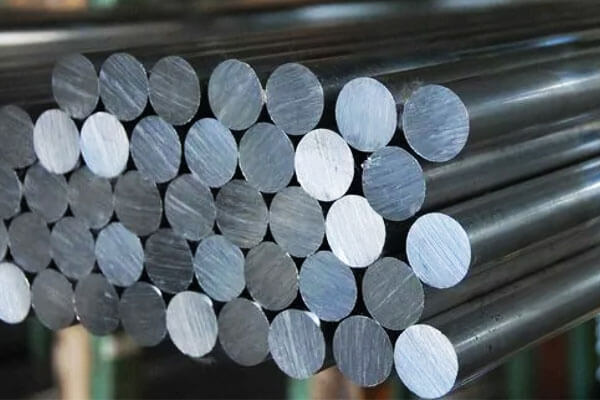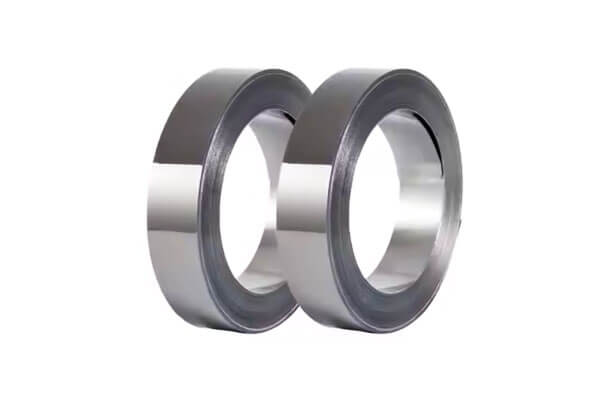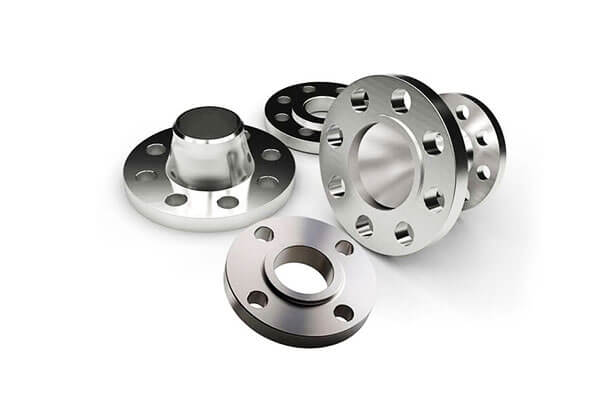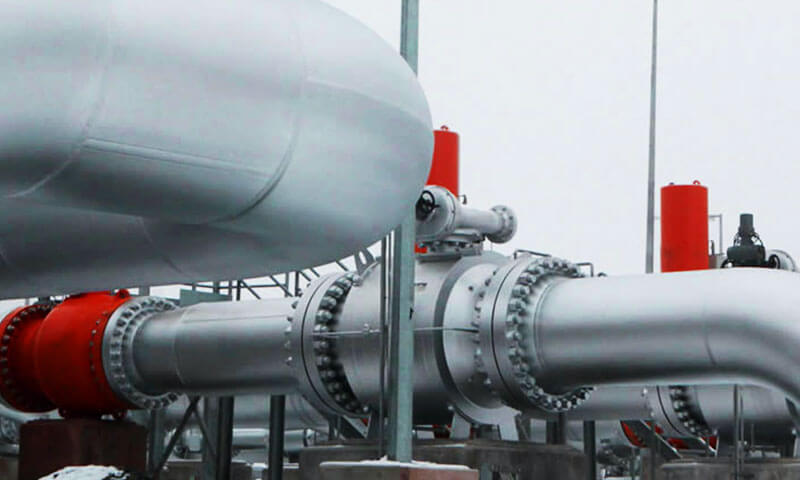1. Zavedení
Nickel-based alloys have long been the foundation of high-performance materials used in extreme environments.
Their ability to withstand vysoké teploty, oxidace, a mechanickému namáhání makes them indispensable in Aerospace, výroba energie, a průmyslové aplikace.
Mezi těmito slitinami, Slitina niklu 75 (2.4951) has earned a reputation for its exceptional thermal stability, odolnost vůči dotvarování, a odolnost proti korozi
Originally developed in the 1940s for the Whittle jet engine turbine blades, this alloy has continued to prove its reliability and versatility napříč několika průmyslovými odvětvími.
Its unique combination of Mechanická síla, Tepelná stabilita, a snadnost výroby makes it an attractive choice for applications requiring long-term durability in high-temperature environments.
Tento článek poskytuje in-depth technical analysis of Nickel Alloy 75 (2.4951), covering:
- Chemical composition and microstructure, explaining how each element contributes to its superior properties.
- Fyzikální, tepelný, and mechanical characteristics, detailing its performance under extreme conditions.
- Manufacturing techniques and processing challenges, highlighting the best fabrication methods.
- Industrial applications and economic feasibility, demonstrating its widespread use.
- Future trends and technological advancements, exploring the next phase of alloy development.
By the end of this discussion, readers will have a comprehensive understanding of Alloy 75 and why it remains a preferred material for demanding engineering applications.
2. Chemické složení a mikrostruktura
Primary Constituents and Their Functions
Slitina niklu 75 (2.4951) je a nickel-chromium alloy určeno pro moderate high-temperature applications.

The following table outlines its key alloying elements and their contributions to material performance:
| Živel | Složení (%) | Funkce |
|---|---|---|
| Nikl (V) | Váhy (~75.0%) | Provides oxidation and corrosion resistance, ensures thermal stability. |
| Chromium (Cr) | 18.0–21,0% | Enhances oxidation and scaling resistance, strengthens the alloy. |
| Titan (Z) | 0.2–0.6% | Stabilizes carbides, improves high-temperature strength. |
| Uhlík (C) | 0.08–0,15% | Forms carbides to enhance hardness and creep resistance. |
| Železo (Fe) | ≤5.0% | Adds mechanical strength without compromising corrosion resistance. |
| Křemík (A), Mangan (Mn), Měď (Cu) | ≤ 1,0%, ≤ 1,0%, ≤0.5% | Provide minor processing benefits and oxidation resistance. |
Mikrostrukturální analýza
- The FCC (Kubický na obličej) Krystalová struktura ensures high ductility and fracture toughness, which is essential for thermal cycling applications.
- Titanium and carbon form carbides (Tic, Cr₇c₃), significantly increasing the alloy’s creep strength at elevated temperatures.
- Microscopic examination (KTERÝ, TEM, and XRD analysis) confirms that uniform grain structures contribute to improved fatigue resistance.
3. Physical and Thermal Properties
Basic Physical Properties
- Hustota: 8.37 g/cm³
- Rozsah tání: 1340–1380 °C
- Elektrický odpor: 1.09 mm²/m (higher than stainless steel, making it ideal for heating elements)
Thermal Characteristics
| Vlastnictví | Hodnota | Význam |
|---|---|---|
| Tepelná vodivost | 11.7 W/m·°C | Ensures efficient heat dissipation in high-temperature environments. |
| Specifická tepelná kapacita | 461 J/kg·°C | Improves thermal stability. |
| Koeficient tepelné roztažnosti (CTE) | 11.0 um/m°C (20–100 °C) | Maintains structural integrity under thermal cycling. |
Oxidation Resistance and Thermal Stability
- Sustains oxidation resistance up to 1100°C, making it ideal for gas turbines and exhaust systems.
- Maintains mechanical strength under prolonged high-temperature exposure, reducing the risk of deformation.
Magnetické vlastnosti
- Low magnetic permeability (1.014 na 200 Oersted) ensures suitability for applications requiring minimal electromagnetic interference.
4. Mechanical Properties and High-Temperature Performance of Nickel Alloy 75
This section provides a comprehensive analysis of Nickel Alloy 75 Mechanické vlastnosti, behavior under extreme conditions, and testing methodologies to evaluate its long-term performance.
Pevnost v tahu, Výnosová síla, and Elongation
Tensile properties define the alloy’s ability to withstand static and dynamic loading without experiencing permanent deformation or failure.
Slitina niklu 75 udržuje high tensile strength and reasonable ductility across a wide temperature range.

Key Tensile Properties
| Teplota (° C.) | Pevnost v tahu (MPA) | Výnosová síla (MPA) | Prodloužení (%) |
|---|---|---|---|
| Room Temp (25° C.) | ~600 | ~275 | ~40 |
| 760° C. | ~380 | ~190 | ~25 |
| 980° C. | ~ 120 | ~60 | ~10 |
Pozorování:
- High strength at room temperature ensures excellent load-bearing capacity.
- Gradual reduction in tensile strength with increasing temperature is expected due to softening effects.
- Ductility remains sufficient at elevated temperatures, allowing for stress redistribution without brittle failure.
These properties make Slitina niklu 75 suitable for components exposed to high temperatures and mechanical stress, jako jsou lopatky turbíny, exhaust ducts, and heat exchanger parts.
Creep Resistance and Long-Term Load Stability
Creep is a critical factor for materials used in Nepřetržité vysokoteplotní aplikace. It refers to the slow, time-dependent deformation under constant stress.
The ability to resist creep determines the longevity and reliability ze slitiny 75 in extreme environments.
Creep Performance Data
| Teplota (° C.) | Stres (MPA) | Time to 1% Creep Strain (hrs) |
|---|---|---|
| 650° C. | 250 | ~10,000 |
| 760° C. | 150 | ~8,000 |
| 870° C. | 75 | ~5,000 |
Klíčové statistiky:
- Strong creep resistance at moderate temperatures (650–760°C) extends component lifespan in jet engines and power plant turbines.
- At 870°C, creep rate increases significantly, requiring careful design considerations for prolonged exposure.
- Slitina 75 outperforms conventional stainless steels, making it a more reliable choice for high-temperature engineering applications.
To further enhance creep resistance, manufacturers often optimize grain size and perform controlled heat treatments, zajištění microstructural stability during prolonged use.
Fatigue Strength and Fracture Toughness
Fatigue Resistance Under Cyclic Loading
It is a major concern in components subjected to repeated thermal cycling and mechanical stress, such as those in aerospace propulsion systems and gas turbines.
Slitina 75 exponáty strong fatigue resistance, preventing premature failure due to cyclic loading.
| Teplota (° C.) | Stress Amplitude (MPA) | Cycles to Failure (x10⁶) |
|---|---|---|
| Room Temp (25° C.) | 350 | ~10 |
| 650° C. | 250 | ~6 |
| 760° C. | 180 | ~4 |
Fracture Mechanics and Crack Propagation
Nickel Alloy 75’s fracture toughness is relatively high, prevence katastrofální selhání due to crack initiation and propagation.
Však, microstructural defects, srážení karbidu, and prolonged thermal exposure can influence crack growth rates.
- Intergranular and transgranular fracture modes have been observed in fatigue testing, v závislosti na temperature and stress levels.
- Optimized grain boundary strengthening techniques (via controlled cooling rates and minor alloying additions) zlepšit odolnost proti prasklinám.
Thermal Stability and Oxidation Resistance
Slitina niklu 75 je navržen pro oxidation resistance up to 1100°C, making it suitable for components in combustion environments and high-temperature reactors.
Key Thermal Properties
| Vlastnictví | Hodnota | Význam |
|---|---|---|
| Tepelná vodivost | 11.7 W/m·°C | Allows heat dissipation in high-temperature applications. |
| Specifická tepelná kapacita | 461 J/kg·°C | Ensures thermal stability. |
| Oxidation Limit | 1100° C. | Provides excellent surface protection. |
| Koeficient tepelné roztažnosti (20–100 °C) | 11.0 um/m°C | Reduces thermal stress during heating and cooling cycles. |
Oxidation and Surface Stability
- Chromium (18–21%) forms a stable oxide layer, protecting the alloy from high-temperature degradation.
- Low sulfur and phosphorus content minimizes embrittlement in thermal cycling applications.
- Compatible with thermal barrier coatings (TBC) and aluminized coatings to further enhance oxidation resistance.
5. Manufacturing and Processing Technologies of Nickel Alloy 75
Nickel Alloys – Alloy 75 is widely used in high-temperature applications,
necessitating precise manufacturing and processing techniques to maintain its mechanická integrita, Tepelná stabilita, and oxidation resistance.
This section explores the primary fabrication methods, heat treatment procedures, svářečské výzvy,
and surface finishing technologies that enhance the alloy’s performance in demanding environments.
Primary Fabrication Techniques
Manufacturing Nickel Alloy 75 components involves obsazení, kování, válcování, a obrábění, each with specific benefits depending on the application.
Obsazení
- Investiční obsazení is commonly used to produce complex aerospace components, turbínové čepele, and exhaust parts.
- Sand casting and centrifugal casting are preferred for large-scale industrial furnace and heat exchanger components.
- Výzvy: High-temperature solidification can lead to smršťovací pórovitost, vyžadující precision control of cooling rates.
Kování a válcování
- Hot forging enhances grain structure and mechanical properties, učinit to ideální pro load-bearing components.
- Cold rolling is used to manufacture thin sheets and strips, zajištění uniform thickness and surface finish.
- Výhody:
-
- Rafinuje strukturu zrn → Improves mechanical strength.
- Reduces internal defects → Enhances fatigue resistance.
- Enhances workability → Prepares alloy for subsequent machining.
Machining Characteristics
Slitina niklu 75 presents mírný obrábění difficulty kvůli jeho high work hardening rate and toughness.
| Machining Property | Effect on Processing |
|---|---|
| Kalení práce | Cutting speeds must be optimized to minimize tool wear. |
| Tepelná vodivost (Nízký) | Generates excessive heat during machining. |
| Chip Formation | Requires sharp cutting tools with high thermal resistance. |
Best Machining Practices:
- Použití tvrdokovové nebo keramické řezné nástroje to handle the alloy’s toughness.
- Zaměstnat high-pressure coolant systems to manage heat buildup.
- Optimalizovat řezné rychlosti (30–50 m/I) and feed rates to prevent work hardening.

Heat Treatment and Thermal Processing
Heat treatment significantly influences the Mechanické vlastnosti, stress resistance, and microstructural stability of Nickel Alloy 75.
Key Heat Treatment Processes
| Proces | Teplota (° C.) | Účel |
|---|---|---|
| Žíhání | 980–1065°C | Změkčuje materiál, uvolňuje stres, and improves workability. |
| Ošetření řešení | 980–1080°C | Dissolves carbide precipitates, homogenizes the microstructure. |
| Stárnutí | 650–760°C | Enhances creep resistance and high-temperature strength. |
Heat Treatment Advantages:
- Improves grain refinement, enhancing fatigue strength.
- Reduces internal residual stresses, minimizing distortion in components.
- Zvyšuje odpor dotvarování, ensuring longevity in high-temperature applications.
Welding and Joining Procedures
Slitina niklu 75 Lze přivařit různými metodami, ale controlling heat input and preventing carbide precipitation is crucial for maintaining mechanical integrity.
Výzvy svařování:
- Cracking Risk: High thermal expansion increases residual stress and hot cracking susceptibility.
- Oxidation Sensitivity: Vyžaduje inert gas shielding (Argon, Helium) to prevent surface contamination.
- Srážení karbidu: Excessive heat input can lead to carbide formation, reducing ductility and toughness.
Doporučené metody svařování:
| Proces svařování | Výhody | Výzvy |
|---|---|---|
| TIG svařování (GTAW) | Přesné ovládání, minimal heat input | Slower than MIG, requires skilled operation. |
| Svařování MIG (Gawn) | Rychlejší ukládání, good for thick sections | Higher heat input may lead to carbide precipitation. |
| Svařování elektronového paprsku (EMS) | Hluboký průnik, minimální tepelné zkreslení | High equipment cost. |
✔ Nejlepší praxe: Po západním tepelném zpracování (PWHT) na 650–760°C na relieve residual stress and prevent cracking.
Povrchové úpravy a nátěry
Povrchové ošetření zlepšit oxidační odolnost, odolnost proti korozi, and mechanical wear resistance, especially for components in extrémních prostředích.
Oxidation-Resistant Coatings
- Aluminizing: Forms a protective Al₂O₃ layer, posílení oxidation resistance up to 1100°C.
- Thermal Barrier Coatings (TBC): Yttria-stabilized zirconia (YSZ) coatings provide tepelná izolace in jet engines.
Ochrana proti korozi
- Elektropolizace: Enhances surface smoothness, reducing stress concentrators.
- Niklování: Improves corrosion resistance in marine and chemical processing applications.
Wear-Resistant Coatings
- Plasma Spray Coatings: Přidá a ceramic or carbide layer, reducing surface degradation in prostředí s vysokým třením.
- Iontová nitridace: Hardens the surface for better wear and fatigue resistance.
✔ Nejlepší praxe: Selecting coatings based on operating environment (teplota, mechanickému namáhání, a chemické expozice) ensures maximum durability.
Quality Control and Testing Methods
To maintain high performance and reliability, Slitina niklu 75 components undergo strict quality control procedures.
Nedestruktivní testování (Ndt)
- X-ray Inspection: Detects internal porosity and voids in cast or welded components.
- Ultrazvukové testování (UT): Evaluates subsurface defects without damaging the material.
- Kontrola penetrantu barviva (DPI): Identifies surface cracks in turbine blades and aerospace parts.
Mikrostrukturální analýza
- Scanning Electron Microscopy (KTERÝ): Examines grain boundaries and carbide distribution.
- X-ray Diffraction (XRD): Determines phase composition and crystallographic changes po tepelné úpravě.
Mechanické testování
- Testování v tahu (ASTM E8): Measures yield strength, konečná pevnost v tahu, a prodloužení.
- Testování tvrdosti (Rockwell, Vickers): Evaluates surface hardness after heat treatment.
- Creep and Fatigue Testing (ASTM E139, E466): Ensures long-term durability under cyclic and static loads.
✔ Nejlepší praxe: Implementing a Six Sigma-based quality control system enhances consistency and minimizes defects in high-performance components.
6. Standardy, Specifikace
Maintaining quality and consistency remains paramount for Alloy 75. Manufacturers adhere to stringent international standards and implement rigorous quality control measures.
Slitina 75 meets multiple international standards, včetně:
NÁS: N06075
British Standards (BS): HR5, HR203, HR403, HR504
DIN Standards: 17742, 17750–17752
ISO standardy: 6207, 6208, 9723–9725
AECMA Pr EN Standards
7. Frontier Research and Technological Challenges of Nickel Alloy 75 (2.4951)
Innovations in Alloy Design
Computational Material Science
Recent advancements in strojové učení (Ml) and density functional theory (DFT) jsou revoluční alloy optimization.
Tyto computational models reduce the need for traditional trial-and-error methods and accelerate the development of improved materials.
🔹 A 2023 study by MIT’s Materials Research Laboratory used ML algorithms to refine Alloy 75’s titanium-to-carbon ratio, což má za následek a 15% improvement in creep resistance at 900°C.
🔹 DFT simulations predict phase stability under extreme conditions, zajištění better oxidation and fatigue resistance in next-generation applications.
Nano-Engineered Precipitates
Scientists are exploring nano-structuring techniques to enhance the Mechanické vlastnosti of Nickel Alloy 75.
🔹 German Aerospace Center (DLR) has successfully integrated 5–20 nm γ’ (Ni₃Ti) precipitates into the alloy through izostatické lisování za tepla (HIP).
🔹 This nano-precipitate formation improves fatigue resistance by 18%, allowing components to endure 100,000+ thermal cycles in jet engines.
Hybrid Alloy Development
Combining Slitina niklu 75 with ceramic composites is emerging as a next-generation material strategy.
🔹 The European Union’s Horizon 2020 program is funding research on karbid křemíku (SiC) fiber-reinforced versions of Alloy 75, leading to prototypes with 30% higher specific strength at 1,100°C.
🔹 This innovation paves the way for hypersonic aircraft, ultra-efficient turbines, and next-gen propulsion systems.
Aditivní výroba (DOPOLEDNE) Breakthroughs
Laser Powder Bed Fusion (LPBF) Advancements
3D printing technologies have transformed Slitina niklu 75 component manufacturing, significantly reducing material waste and lead times.

🔹 GE Additive has successfully 3D-printed turbine blades s 99.7% hustota using LPBF.
🔹 Optimized laser parameters (300 W power, 1.2 m/s scan speed) have led to 40% reductions in post-processing costs, while still maintaining ASTM tensile strength standards.
Challenges in Additive Manufacturing
Despite these breakthroughs, residual stress and anisotropic mechanical properties remain major obstacles.
🔹 A 2024 study by the Fraunhofer Institute found 12% variability in yield strength across different build orientations, underscoring the need for post-print heat treatment to homogenize the microstructure.
🔹 Current efforts focus on in-situ process monitoring, ensuring defect-free structures through real-time laser parameter adjustments.
Smart Components and Sensor Integration
Monitorování stavu v reálném čase
Integrace fiber-optic sensors into Alloy 75 komponenty is unlocking a new era of predictive maintenance and performance tracking.
🔹 Siemens Energy has embedded fiber-optic sensors in Slitina niklu 75 turbínové čepele, poskytování live data on strain, teplota, and oxidation rates.
🔹 This IoT-driven approach has reduced unplanned downtime by 25%, improving efficiency in power generation and aviation sectors.
8. Závěr
Na závěr, Nickel Alloy Alloy 75 (2.4951) represents a harmonious blend of chemical precision, physical robustness, a mechanickou spolehlivostí.
Its evolution from early aerospace turbine blades to indispensable industrial components underscores its enduring value.
As manufacturing techniques advance and research continues to push the boundaries, Slitina 75 remains a strategic choice for high-temperature and high-stress applications.
If you’re looking for high-quality Nickel Alloy 75 produkty, výběr TENTO je perfektním rozhodnutím pro vaše výrobní potřeby.



